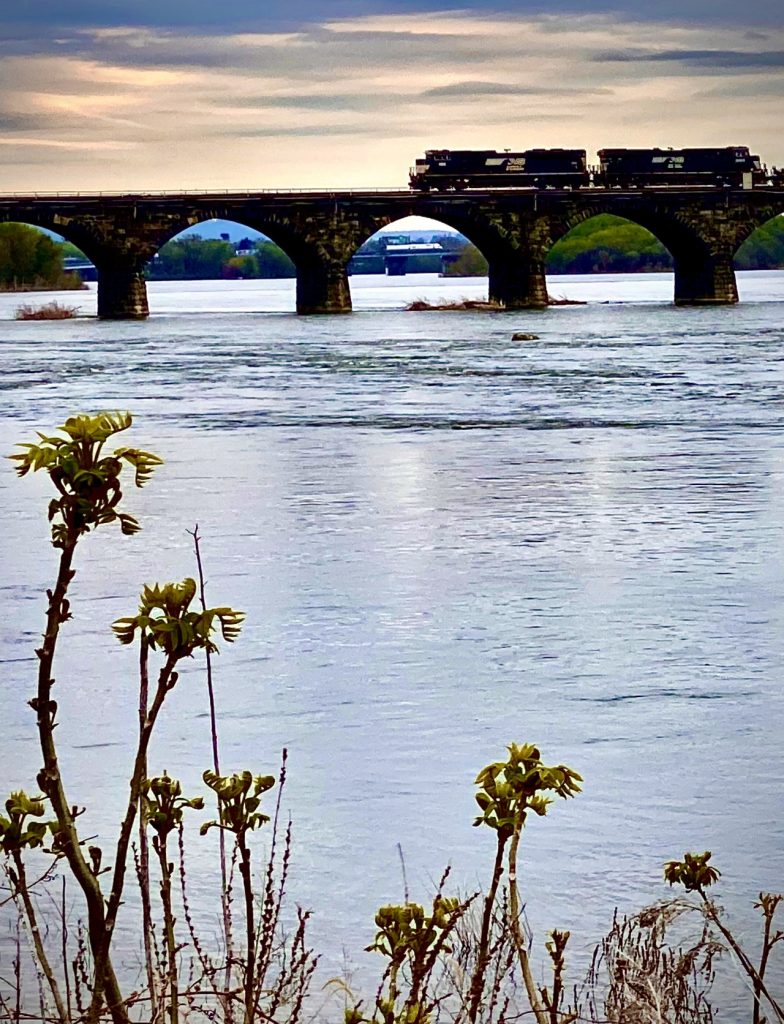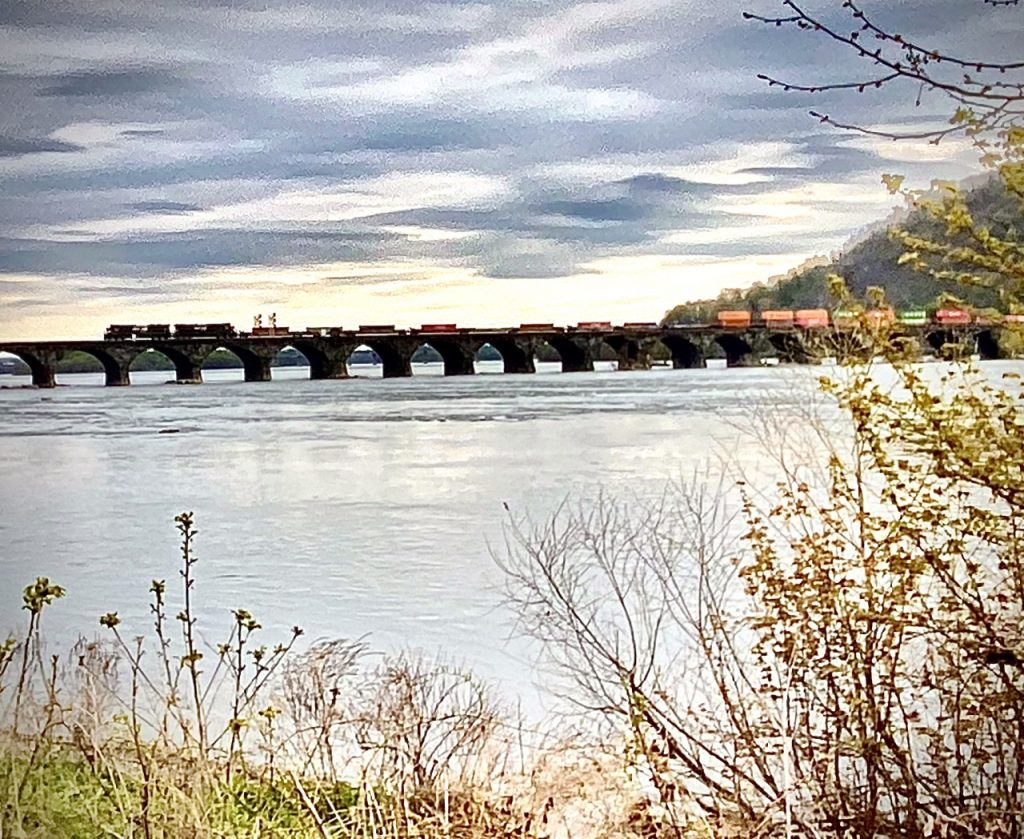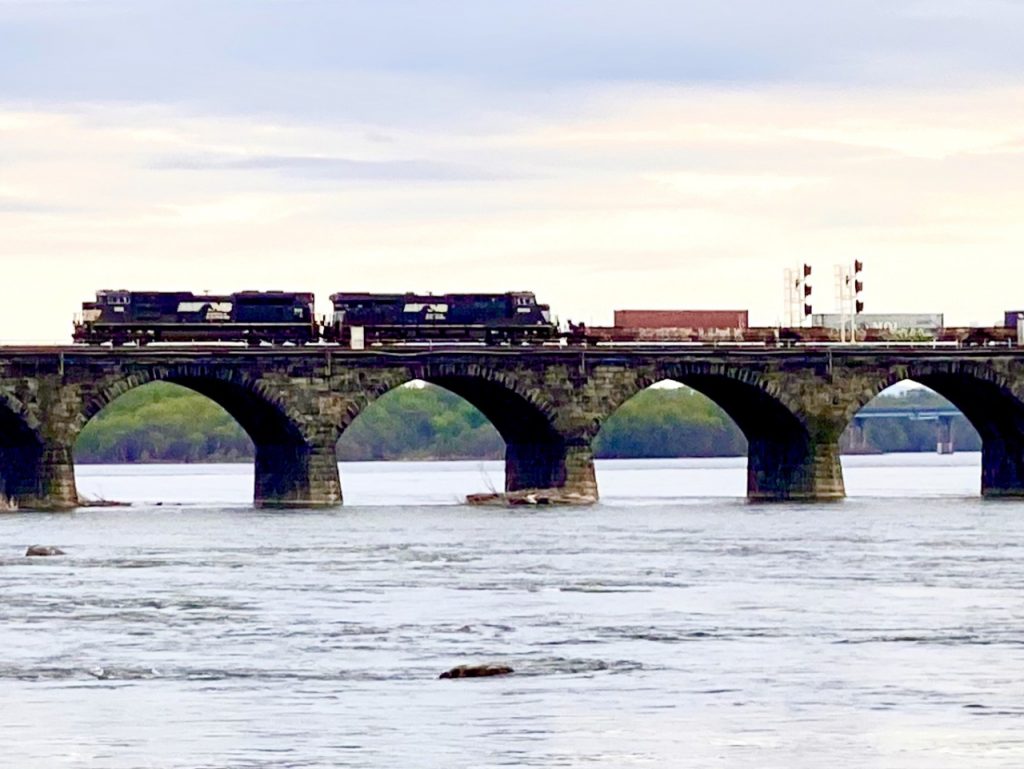Camp Hill, PA — Tonight I visited the Fort Hunter Historic area on a social distancing walk with my favorite furry friend. I stood watching trains at the Rockville Bridge for about an hour. The view was breathtaking.
During my walk, I learned that the Eastern Division of the Main Line of the Pennsylvania Canal was located in the area in 1826 and completed in 1833. This was a 43-mile stretch of the canal that linked Columbia, Pennsylvania, to the mouth of the Juniata River at Duncan’s Island. It was an integral part of the canal system that spanned the Commonwealth of Pennsylvania and was used through the early 1900s.

The canal inspired the quick development of private profitable railroads in the area. The railroads followed the canal west, and in 1852, the railroad connected two cities, Philadelphia and Pittsburgh, and crossed the Susquehanna River on the Rockville Bridge.
The Rockville Bridge is the longest stone masonry arch railroad bridge in the world and was built sometime between 1900 and 1902, the third bridge built in the area by the Pennsylvania Railroad. It spans the river at a length of 3,820 feet, complete with 48 arches.

In a time of economic downturn, there is something very comforting about watching trains and knowing that the locomotives and cars are constantly moving forward in a balanced rhythm across the steel gauge tracks, supporting the nation’s economy, environment, and quality of life.
The nation’s freight rail network steams ahead moment by moment—tank cars, coal cars, hoppers, and reefers keep America’s products and goods moving forward in transit to communities across the United States, providing citizens the goods they need for daily living.
Freight rail truly is the ‘engine that keeps America moving forward.’
For without the railroad, where would America be as a country?
Information sources: Fort Hunter Mansion and Park and Pennsylvania Historic Markers.



